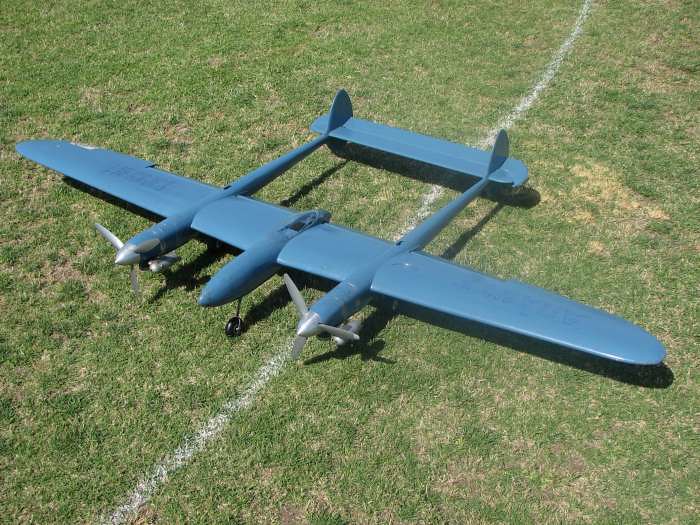Cording to the Aero Nauticists

The TWIN Tails ( from studying for the P #* , or is that P-38 , Have Side Gust Responce of a single tail & dirctional stabilty of the two , as its got DOUBLE the projected side view area .
I found the yaw stabilty of this thing very good to excellent , at the ' test ' stage , which was something like wot'd be the ragged edge , with only two old OS 35-S's . It'd even do wingovers & the lower rounds on the OUTER , with a bit of leaning on the handle and a bit of a slow dive to assist . As in Go over & inverted and back , on the outer . With the 10x4s on it . 9x6s were useless .
SIDE AREA .

My blue spitfire with the invasion stripes , did the shedule on the 2nd or third flight , or both , with a weak ST 60 , and flew well .
From then on it was a [pig .. Yawinging , rocking , snaking , bobbling and kniveing . With a G 51 TOO , so I put the A ST 60 backin .
One Day I whittled the spare cowl ( the Deeper P.R. version , goes up ( or Down

) to the Head ! . LIKE IT WAS AT FIRST !
the Std ish cowls curved from the spinner back - AND has a big ugly eggish opening ( like windy's )
Thus : Fwd Side Area - effecive - Massive trim Change . Mutter Fume . Particularly with C G near aft limit .
Whammo , back to well behaved .



Tho it did rock and skid htting its slipstream the other day . i should be doping
the replaced outer covering over the Std &age ribs in the wing ends , like wot It shoulda Had , straight off rather than the THINNED ONES .
we'll see ! .
P R type Cowl , pitcher .

NOW , cording to our friend Windy , or is that Jose ; Big Jim Favoured deep noses ( on Aeroplanes ) to balance theside area , in the overheads & wingovers ,
as the air sitting on the inner nose , holds it up . So stops it falling in .
Further , a rounded tapered un plank fuse. would slightly weave & yaw ( both lateral ) flying to slow on the near stall ecge ( Plank wing spit. ) .
As it ' Hit the Cam ' , you felt the Aerodynamic Surfaces ( 1/4 Hard New Gunea Balsa Sheet ) ' Kick In ' and GROOVE it , both laterally & in the vertical .
As if you had NO Fuselage , it was ! .
So , There you go . You did ask ! .
This Thing DOSNT really have ANY side area , in a sense . Its ALL ROUNDED . As what someone was talking off somewhere , regarding WIND . ( Ref: P-38 Comments )

Ref ' Twin Tail Q ' . its gottem .
A NOTHER ASPECT of the LONG WING ( wot wasnt asked for ) is the Leadout Guide way out there , it seems way more conspicuous , shall we say . or definative . or THERE !
thats 2 metre / 78 inch . Too Big . ( redrawn 7/8th to or something to LESS and 580 Sq in , from 680 for two FSR 25s

)The 6 foot / 72 Inch Mew Gull exhibited that factor also .
The CONCERN is the Tip weight , too - has a L O N G moment , out there . So I dont put it there !

And YEA , The Phantom weathervanes with to big flying surface - FIN , as against a similar but lower / smaller less outrageous one .. Bob Hunt took a dislike to fins , with His Genisis

.
Perhaps VERTICAL FLYING SURFACE ( fin / rudder ) are a seperate if pertanant factor . The ' Big Jim ' class, seems to minimalise that . Re: previous FUSE AREA B. J. Info .

So , Theres Fuse side Area , AND Flying Surface - Vertical . It would seem .